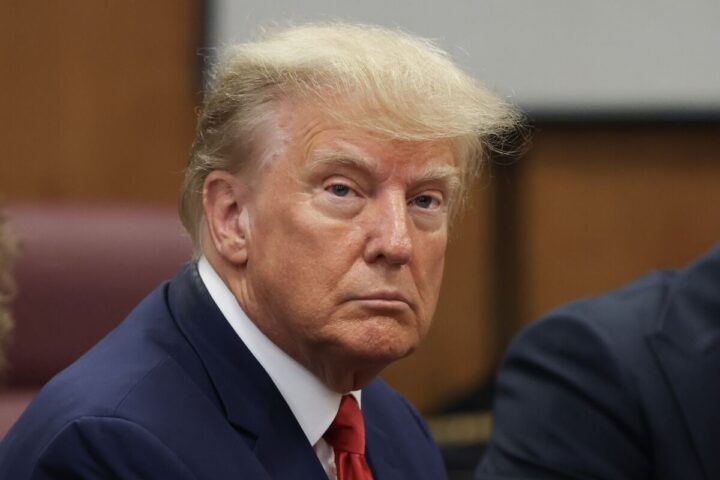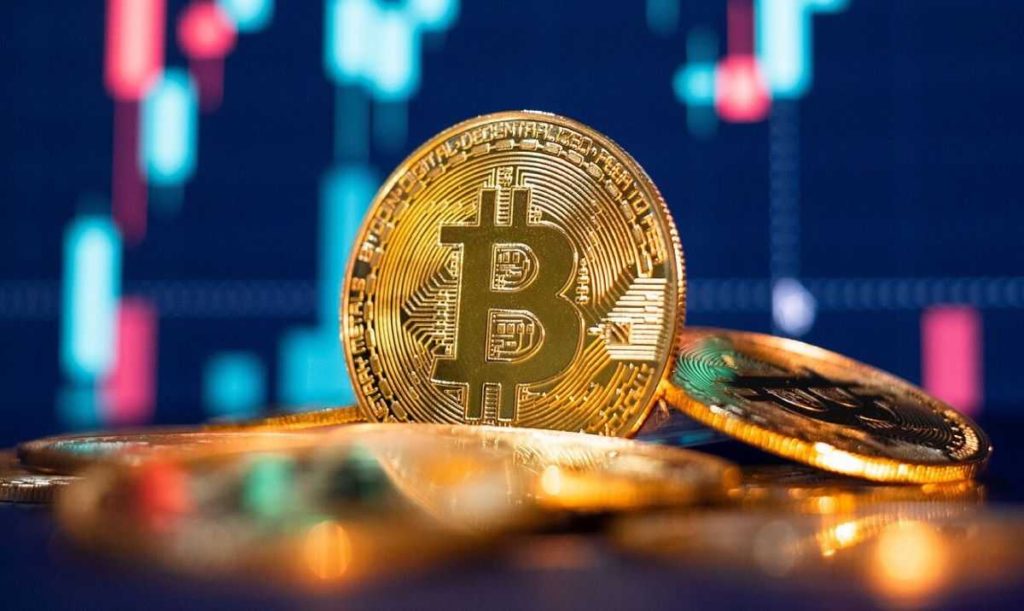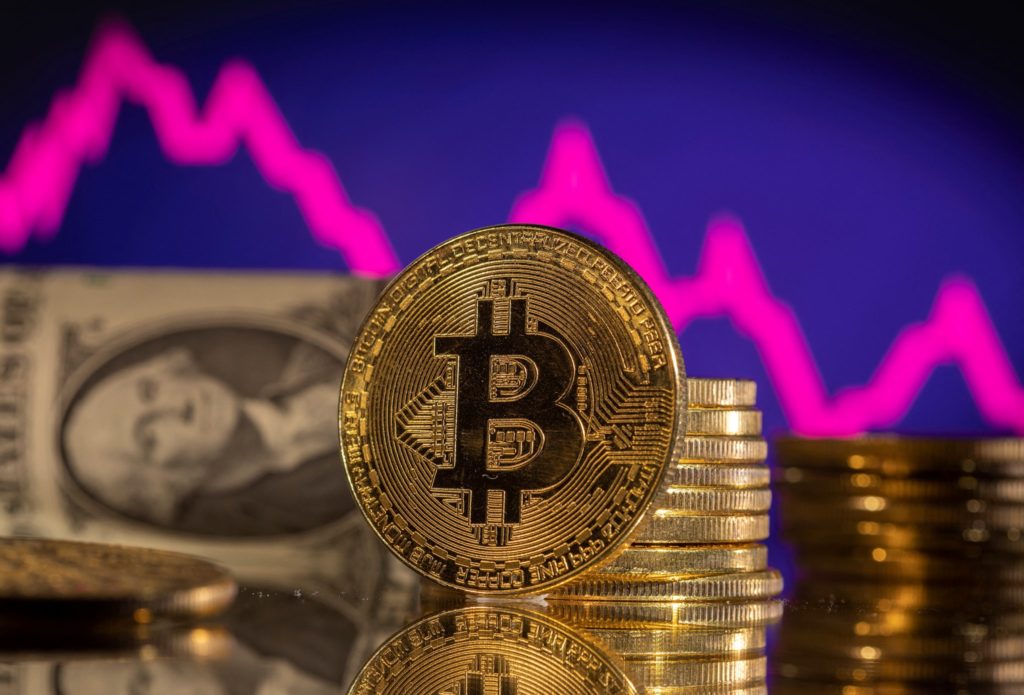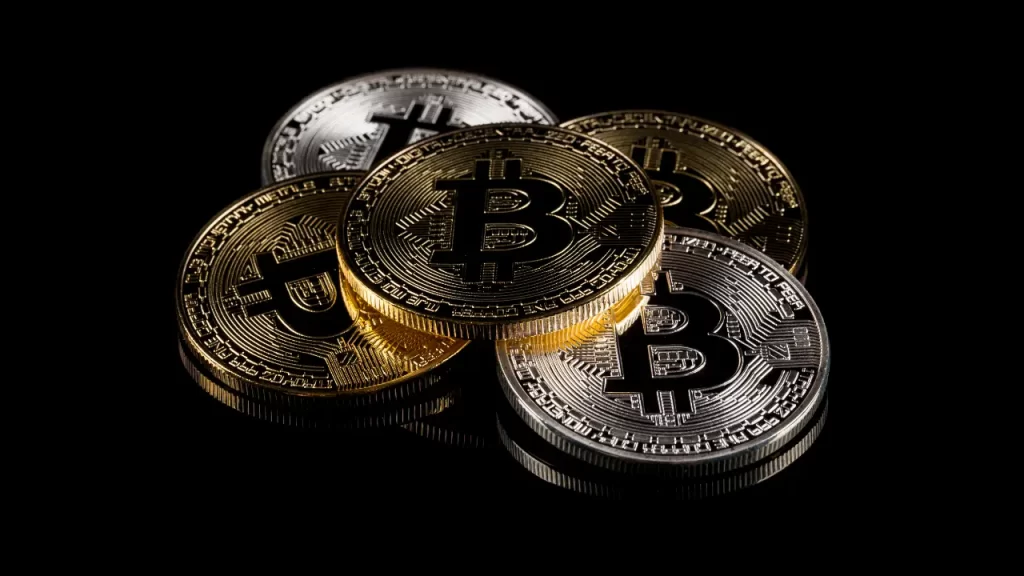According to analysts at Cantor Fitzgerald, eleven of the largest publicly traded Bitcoin miners may face profitability challenges if the price of Bitcoin (BTC) does not experience a significant increase following the upcoming halving event.
CleanSpark’s executive chairman and co-founder, Matthew Shultz, shared this research on January 25th, highlighting concerns for miners like Marathon Digital, Riot Platforms, and Core Scientific, as their mining operations may no longer cover their costs.
While Bitcoin miner revenues are closely tied to BTC’s price, Luxor’s executive emphasized that miners often employ strategies to mitigate potential losses from price volatility.
Nevertheless, Cantor Fitzgerald’s assessment suggests that, at the current BTC price, UK-based Argo Blockchain and Florida-based Hut 8 could be the most vulnerable post-halving, with an “all in” cost-per-coin rate of $62,276 and $60,360, respectively.
Hut 8 reported in its January 5th update that it held 9,195 BTC, worth $377 million at current prices.
Cantor analysts only expected Singapore-based Bitdeer and US mining firm CleanSpark to maintain profitability following the halving, assuming an average BTC price of $40,000 and no drastic changes in hash rate.
The “all in per coin” metric takes into account all costs incurred in producing a single Bitcoin, including electricity and hosting fees.
READ MORE: Surge in Ethereum Execution Client Diversity Raises Decentralization Hopes
The Bitcoin halving, scheduled for April, involves cutting mining rewards in half, potentially impacting miners with high operational costs.
If BTC’s price does not cover these costs, their situation could worsen.
However, many market experts believe that the halving could drive a long-term increase in BTC’s price, which would alleviate this concern.
Dan Rosen, associate director of derivatives at Bitcoin miner Luxor, explained that miners often employ various strategies to hedge against BTC price fluctuations, such as purchasing derivatives products like hash rate futures contracts and BTC-related options.
Cointelegraph attempted to contact several Bitcoin miners mentioned in the report for comment, but no immediate responses were received.
The fate of these miners will depend on BTC’s post-halving price performance and their ability to manage operational costs in an evolving market.
The United States government’s decision to sell approximately $118 million worth of seized Silk Road Bitcoin has sparked discussions within the cryptocurrency market.
The announcement of this planned sale came through a forfeiture notice on January 10, which gained attention on social media on January 24.
This move follows the sentencing of Silk Road Xanax dealer Ryan Farace and his father Joseph Farace for money laundering conspiracy on January 8.
While some members of the crypto community expressed concerns that this auction might result in a significant Bitcoin “dump,” many market experts disagree.
Steven Lubka, the managing director at the Bitcoin exchange Swan Bitcoin, downplayed the impact of the sale, describing it as “peanuts” compared to the recent outflows from the Grayscale Bitcoin Trust (GBTC).
The GBTC has sold a substantial 106,575 BTC worth $4.2 billion since converting to a spot Bitcoin exchange-traded fund on January 11, with an additional 10,871 BTC outflow on January 24.
Furthermore, the planned sale by the U.S. government represents only 1.5% of its total holdings of approximately 194,188 BTC, equivalent to $7.7 billion, acquired from three separate seizures in criminal cases.
READ MORE: The 4 Early Projects to Watch Before Going Mainstream in 2024
This figure still accounts for less than 1% of Bitcoin’s overall circulating supply.
The three sources of Bitcoin held by the U.S. government include 94,643 BTC seized in January 2022 from the 2016 Bitfinex hack, 69,369 BTC seized in November 2020 from the Silk Road, and 51,326 BTC seized from Silk Road hacker James Zhong.
Approximately 41,000 BTC is expected to be gradually offloaded through four sales scheduled throughout 2023.
Notably, the U.S. government has a history of auctioning off seized Bitcoin assets.
In 2014, venture capitalist Tim Draper purchased nearly 30,000 BTC through such an auction.
More recently, the government has opted to sell seized cryptocurrencies on exchanges instead of holding auctions, with the last known sale involving 9,118 BTC in March 2023.
Overall, the upcoming sale of seized Silk Road Bitcoin by the U.S. government is expected to have a limited impact on the cryptocurrency market, given its relatively small scale compared to recent market activities and the government’s total holdings.
In his latest blog post titled “Yellen or Talkin’?” dated January 24, Arthur Hayes, the former CEO of BitMEX, has delivered a bearish short-term price prediction for Bitcoin (BTC), suggesting it may encounter a significant drop to $35,000 or even lower.
Despite Bitcoin’s remarkable 75% increase over the past year, Hayes identifies a confluence of factors that could contribute to this impending downturn.
One of the primary concerns outlined by Hayes is the ongoing Red Sea conflict between the United States and the Houthis, which is having ramifications on global shipping.
He notes that this conflict could lead to increased inflation as risk assets, including cryptocurrencies, anticipate a potential shift by the Federal Reserve in March, involving reduced interest rates to attract liquidity back into the market.
Hayes highlights that elevated shipping costs, driven by weather and geopolitical issues, may cause a surge in inflation during the third and fourth quarters of the year.
To combat this, he speculates that Fed Chair Jerome Powell will engage in verbal intervention, signaling potential rate cuts without actually implementing them.
Hayes emphasizes that Bitcoin is uniquely positioned to benefit from this scenario, as it thrives in times of economic uncertainty.
Another factor Hayes touches upon is the state of the U.S. regional banking sector.
READ MORE: Hugewin Review 2024: Is It Legit and Safe? A Breakthrough in Crypto Casino Gaming
He mentions that since the financial crisis in March 2023, the U.S. government has provided support through the Bank Term Funding Program (BTFP), which is set to expire soon.
Despite lingering financial problems within the banking sector, Hayes believes that the fate of liquidity and other related issues rests on Treasury Secretary Janet Yellen’s future decisions.
Hayes suggests that a few banks may need to fail if the BTFP is not renewed to pave the way for the cuts, QT taper, and potential resumption of Quantitative Easing (QE) that the market expects in March.
He asserts that the only thing that could surpass fighting inflation in priority is a financial crisis.
Regarding Bitcoin’s price, Hayes predicts that it could experience a substantial correction, potentially reaching $33,600, or a 30% decline from its peak after ETF approval at $48,000.
He believes that Bitcoin might find support within the range of $30,000 to $35,000.
As a result, Hayes has taken a position by purchasing put options with a strike price of $35,000 expiring on March 29, 2024.
This sub-$35,000 level, according to Hayes, presents an opportunity for investors to capitalize on the impending market dip.
On January 23, BTC/USD briefly touched $38,500 on Bitstamp, its lowest point since early December, before rebounding approximately $1,700 higher, as indicated by data from Cointelegraph Markets Pro and TradingView.
Grayscale’s Bitcoin Trust (GBTC) has displayed a ray of optimism as its outflows have recently slowed for the second consecutive day, hinting that the massive Bitcoin selloff might be nearing its conclusion.
Data from BitMEX Research indicates that on January 24th, GBTC outflows amounted to $429 million, marking the smallest daily outflow since the inception of Grayscale’s spot Bitcoin ETF on January 11th.
This also signifies a 33% reduction compared to the outflows observed at the beginning of the week on January 22nd.
Eric Balchunas, an ETF analyst at Bloomberg, observed on January 25th that GBTC outflows appear to be on a downward trend, though he acknowledged that the figure is still considerable.
He pointed out that there remain several uncertainties regarding when the “mass exodus” from GBTC will come to an end.
Over the course of nine trading days, GBTC has seen a significant outflow of 106,092 BTC, equivalent to around $4.4 billion.
However, it is crucial to note that a slowdown in daily outflows does not necessarily indicate that GBTC’s “bleeding” has ceased or significantly slowed down.
Balchunas had previously estimated that GBTC would need to lose approximately 25% of its outstanding shares before the outflows come to a halt.
READ MORE: Avalanche Foundation Sets Criteria for Memecoins Seeking Share of $100 Million Fund
Adding to the complexity, Arkham Intelligence, a blockchain tracking firm, has cautioned against misinterpreting the GBTC transaction data displayed on its platform.
In a January 24th post, Arkham clarified that the outflow data for GBTC exhibited on its platform is divided between Coinbase Prime and new GBTC custody addresses.
Consequently, not all of the BTC being transferred from Grayscale’s Bitcoin Trust is necessarily being redeemed. This is due to the inherent structure of Bitcoin transactions, which often split outputs among multiple addresses.
Arkham further explained that “GBTC custody wallets frequently send to multiple addresses,” meaning that a portion of the BTC sent in a transaction might be directed to an address different from the main recipient indicated in the transaction panel.
In summary, while the recent slowdown in GBTC outflows provides a glimmer of hope for investors, it’s essential to approach the data with caution and consider the complexities of Bitcoin transactions, as highlighted by Arkham Intelligence.
The future trajectory of GBTC and its outflows remains uncertain, and investors will likely continue to monitor the situation closely.
The Federal Court of Canada has delivered a significant ruling, deeming an emergency law utilized by the Canadian government to halt the flow of funds and cryptocurrency to protesting truckers as unreasonable and unconstitutional.
On January 23rd, Justice Richard Mosley unequivocally asserted, “There was no national emergency justifying the invocation of the Emergencies Act, and the decision to do so was therefore unreasonable.”
In February 2022, Prime Minister Justin Trudeau’s administration deployed the law for the first time to freeze funds, including cryptocurrencies, donated to truckers who were protesting COVID-19 restrictions. The court found this action to be in violation of the constitution.
These protesters, part of the “Freedom Convoy,” had used their trucks to block streets in Ottawa, Canada’s capital, in opposition to a mandate requiring truck drivers crossing the Canada-United States border to be fully vaccinated against COVID-19.
The government had argued that invoking the Emergencies Act was essential due to the protests being deemed an illegal occupation.
Various organizations, including the Canadian Civil Liberties Association (CCLA) and the Canadian Constitution Foundation, challenged the government’s use of this emergency law to freeze funds, contending that it was unnecessary and unconstitutional.
The CCLA hailed the decision as a “clear and critical precedent for every future government.”
Justice Mosley emphasized that the Emergencies Act should only be invoked as a last resort, stating, “The government cannot invoke the Emergencies Act because it is convenient, or because it may work better than other tools at their disposal or available to the provinces.”
Finance Minister Chrystia Freeland announced the government’s intention to appeal the ruling.
Cryptocurrency played a pivotal role in financing the 2022 trucker protests, with protesters believed to have received millions of dollars.
However, the exact amount raised remained unclear due to the challenges associated with tracking decentralized digital assets.
In response to the freezing of funds, organizers moved their efforts to platforms like Tallycoin, a crowdfunding platform built on the Bitcoin blockchain, and the Christian crowdfunding site GiveSendGo.
These platforms collectively raised substantial sums, including unspecified amounts in cryptocurrency. Nevertheless, Canadian authorities also took measures to freeze bank accounts associated with GiveSendGo donations.
At the time, leaders in the cryptocurrency industry, including Jesse Powell, the founder of Kraken, voiced their condemnation of Canada’s freeze on digital assets.
The cryptocurrency community has brushed off the recent remarks made by JPMorgan CEO Jamie Dimon during an interview on CNBC.
Dimon’s repeated criticisms of Bitcoin, which included debunked claims about its creator, Satoshi Nakamoto, returning to “erase” the cryptocurrency, as well as allegations that Bitcoin “does nothing” and has criminal use cases, have raised suspicions within the crypto community.
Some members of the community speculate that Dimon’s constant negative statements about Bitcoin may be an attempt to manipulate its price.
On Reddit, one user suggested that Dimon’s influence over older investors could be leveraged to drive down the price of Bitcoin, allowing him to accumulate more cryptocurrency at a lower cost.
However, opinions within the community vary. Some believe that Dimon is simply uninformed about Bitcoin, while others think he may be strategically acquiring Bitcoin in anticipation of the upcoming halving event, which many believe will drive up the cryptocurrency’s price.
Dimon’s suggestion that Satoshi Nakamoto could return to “erase” Bitcoin is widely regarded as flawed due to the decentralized nature of the cryptocurrency.
READ MORE: Mt. Gox Trustee Advances Towards Bitcoin Repayments with Identity Verification Confirmation
Nonetheless, a community member proposed the alternative theory that Nakamoto might choose to sell their Bitcoin holdings, which some consider to be a more plausible scenario than Dimon’s idea.
Interestingly, while Dimon continues to criticize cryptocurrencies, it’s worth noting that JPMorgan, the company he leads, is actively involved in the cryptocurrency space.
JPMorgan Securities was named as one of the authorized participants for BlackRock’s recently approved spot Bitcoin exchange-traded funds (ETFs) in the United States.
This move drew criticism, as it appeared contradictory for Dimon to make anti-crypto comments while his company was embracing cryptocurrency-related ventures.
In conclusion, Dimon’s negative remarks about Bitcoin have sparked speculation within the crypto community regarding his motivations.
While some believe he is attempting to manipulate the market, others think he may be positioning himself for potential gains from the upcoming halving event.
Regardless of his statements, the involvement of JPMorgan in cryptocurrency-related initiatives adds an intriguing dimension to the situation.
The ongoing saga of an investor exodus from Grayscale’s Bitcoin Trust (GBTC) has sent shockwaves through the cryptocurrency market, dragging Bitcoin’s price down to below $39,000 for the first time in nearly two months.
Since its transformation into a spot Bitcoin exchange-traded fund (ETF) on January 11, GBTC has experienced massive outflows, totaling more than $3.4 billion.
In response to this, Grayscale has been depositing vast amounts of Bitcoin onto the crypto exchange Coinbase Prime, presumably for sale.
The situation has raised concerns about the extent of the GBTC exodus and its potential consequences.
According to Eric Balchunas, an ETF analyst at Bloomberg, GBTC saw outflows of $515 million on January 23, resulting in a loss of 13% of its outstanding shares.
However, there are indications that the pace of outflows may be slowing down.
In an informal poll conducted on social media platform X (formerly Twitter), Balchunas sought the opinion of the community on when the “mass exodus” from GBTC might end.
Nearly half of the respondents believed it could continue until shares outstanding had diminished by 35–50%, while Balchunas and fellow Bloomberg analyst James Seyffart estimated this might occur at around 25% of outstanding shares.
Currently, Grayscale’s website shows 600.5 million shares outstanding, holding a total of 536,694.9 Bitcoins in trust.
READ MORE: US House Committee Pressures Meta for Transparency on Crypto and Blockchain Plans
In contrast, data from CC15Capital indicates that 82,525 Bitcoins have departed from GBTC since January 10.
The recent wave of outflows is primarily attributed to the defunct cryptocurrency exchange FTX, which reportedly sold two-thirds of its 22.3 million GBTC shares in just three days of trading.
FTX still holds approximately eight million shares, valued at around $281 million, awaiting sale.
Additionally, there is growing concern that Bitcoin from Mt. Gox may soon enter the market.
The Mt. Gox trustee has reportedly contacted creditors to complete identity verification for crypto exchange accounts, which are intended to be used for repaying Bitcoin and Bitcoin Cash. This potential influx of assets could add further downward pressure to Bitcoin’s price.
As of now, Bitcoin is trading at $39,949, showing a slight increase of 0.60% for the day, according to data from CoinMarketCap.
The Crypto Fear & Greed Index hit a 100-day low of 48 on January 24, reflecting the uncertainty and apprehension surrounding the cryptocurrency market.
Bitcoin faced significant pressure as it struggled to hold the $40,000 mark on January 22, coinciding with the Wall Street opening bell.
This downward trend was exacerbated by ongoing BTC sales from Grayscale, a prominent asset manager.
Data from Cointelegraph Markets Pro and TradingView confirmed that Bitstamp witnessed Bitcoin hitting new six-week lows at $40,324.
While BTC’s price had shown relative stability over the weekend, the new week brought continued selling pressure due to the Grayscale Bitcoin Trust (GBTC) reducing its assets under management.
In response to the recent approval of its transition to a spot Bitcoin exchange-traded fund (ETF), GBTC experienced outflows totaling 19,250 BTC, equivalent to $785 million, on January 22, according to live data from Arkham, a crypto intelligence firm.
Some sources even estimated the outflows to be as high as $700 million, as noted by Alex Thorn, head of research at Galaxy, a crypto reconnaissance firm.
Eric Balchunas, an ETF analyst at Bloomberg Intelligence, expressed concerns that these massive sales, conducted as transactions with Coinbase, might be too substantial for other ETF players to absorb.
Despite these challenges, the new spot ETF cohort continued to receive net positive inflows.
GBTC still held over $20 billion in assets, with its share price trading at just a 0.27% discount relative to BTC spot prices as of January 19, according to data from Bitcoin Treasuries.
Bitcoin’s price remained resilient, maintaining support at the $40,000 level despite increasing speculation of further declines.
Many traders started eyeing the mid-$30,000 range as a potential entry point for long positions.
READ MORE: Terraform Labs, Behind Defunct TerraUSD, Files for Bankruptcy Amid Ongoing Legal Battle
The BTC/USDT order book on Binance, a major global exchange, showed growing interest from buyers at $38,500.
Material Indicators, a trading resource, observed that Bitcoin often experienced significant price fluctuations within the first few hours after the US market opened, often linked to ETF flows occurring at the start and end of trading days.
Arthur Hayes, former CEO of BitMEX, shared the sentiment, describing the BTC/USD market as “heavy” and joined others in predicting further price declines.
Despite these challenges, the cryptocurrency market continued to draw attention and interest from investors, with its future trajectory remaining uncertain.
The trustee overseeing the recovery of the hacked cryptocurrency exchange, Mt. Gox, has taken significant steps toward repaying creditors in Bitcoin (BTC) and Bitcoin Cash (BCH).
Recent reports indicate that Mt. Gox creditors have been contacted to confirm their identities and the existence of their exchange accounts, a crucial step in the reimbursement process.
Numerous Mt. Gox creditors have received emails from the trustee, notifying them of the successful completion of identity verification for their crypto exchange accounts.
These accounts will be utilized to facilitate the repayment of BTC and BCH. In a notification posted on Mt. Gox’s insolvency hub on Reddit on January 22nd, it was revealed that a crypto exchange mentioned in a user’s rehabilitation claim had confirmed the ownership of the account with the trustee.
Consequently, the exchange is now poised to accept the user’s subscription to the agency receipt for receiving repayment in BTC or BCH.
However, the email also issued a cautionary note, stating that users might face difficulties in receiving repayment if their accounts are disabled or frozen in the future.
Numerous Reddit users have confirmed receipt of such emails from the Mt. Gox trustee, with the majority of confirmations originating from the Bitstamp exchange.
Some Kraken users also reported receiving confirmation emails, while others have not yet received any communication from the trustee.
Interestingly, certain exchanges involved in the repayment process have informed their users that they will continue serving Mt. Gox-related customers in specific countries, despite their withdrawal from those jurisdictions.
Bitstamp, for instance, which ceased operations in Canada on January 4, 2024, announced that it would continue servicing local accounts engaged in the Mt. Gox settlement.
However, these accounts will have limited functionality, restricted to withdrawals only, with deposits and trading no longer available.
These developments coincide with the trustee’s progress in facilitating bank account repayments. Reports of the first Mt. Gox repayments surfaced in late December 2023, and some creditors even received double payments during this phase.
Founded in 2010, Mt. Gox was once the world’s largest Bitcoin exchange, handling approximately 70% of all BTC transactions.
However, it suffered a massive security breach in 2014, resulting in the loss of 850,000 BTC and making it one of the largest crypto bankruptcies in history.
Mt. Gox is now on track to repay its creditors a total of 142,000 Bitcoin and 143,000 Bitcoin Cash, along with 69 billion Japanese yen (approximately $510 million) by October 2024.
The fee war in the Bitcoin exchange-traded fund (ETF) arena has now crossed the Atlantic to Europe. This development follows the recent approval by the United States Securities and Exchange Commission (SEC) of Bitcoin ETFs in the United States, marking a significant shift in the financial landscape.
In the lead-up to the SEC’s approval on January 10th, many applicants in the U.S. continually adjusted their S-1 filings to reduce their ETF fees. Now, a similar trend is emerging in Europe among listed exchange-traded products (ETPs).
Two prominent asset management firms, Invesco and WisdomTree, have taken a bold step by slashing fees on their European-listed ETPs by over 60%.
Invesco’s $137 million Physical Bitcoin ETP will see its fee drop from 0.99% to a mere 0.39%, while WisdomTree’s $325 million Physical Bitcoin ETP will see its cost decrease from 0.95% to 0.35%.
It’s worth noting that in Europe, digital asset exchange-traded products are structured as exchange-traded notes (ETNs), a distinction from funds.
ETN investors hold debt securities, while ETF shareholders have a stake in the fund’s underlying assets.
READ MORE: Terraform Labs, Behind Defunct TerraUSD, Files for Bankruptcy Amid Ongoing Legal Battle
The significant fee reductions can be attributed to increased competition and the proliferation of multiple ETFs in the U.S., a leading global financial market.
Previously, U.S.-based investors had to look to Canadian and European-based ETPs for investment opportunities.
However, with the SEC’s green light for 11 spot Bitcoin ETFs in the U.S., the demand for European ETPs from U.S. investors has markedly diminished.
Gary Buxton, Invesco’s Head of ETFs for Europe, explained in an interview with the Financial Times that the multitude of ETFs in the U.S. adjusted their fees to establish a “new equilibrium between supply and demand.” This led to considerably lower prices compared to existing ETPs in Europe.
U.S.-based Bitcoin ETFs have an advantage over their European counterparts in terms of liquidity and accessibility.
They are available on a single exchange platform, making them more convenient for European investors.
The recently launched spot Bitcoin ETFs in the U.S. have witnessed massive trading volumes from day one and continue to trade billions of dollars in daily volume, further strengthening their appeal to investors on both sides of the Atlantic.
This fee war signals a shifting landscape in the world of digital asset investment, with investors benefiting from reduced costs and increased options as competition heats up in both the U.S. and Europe.








